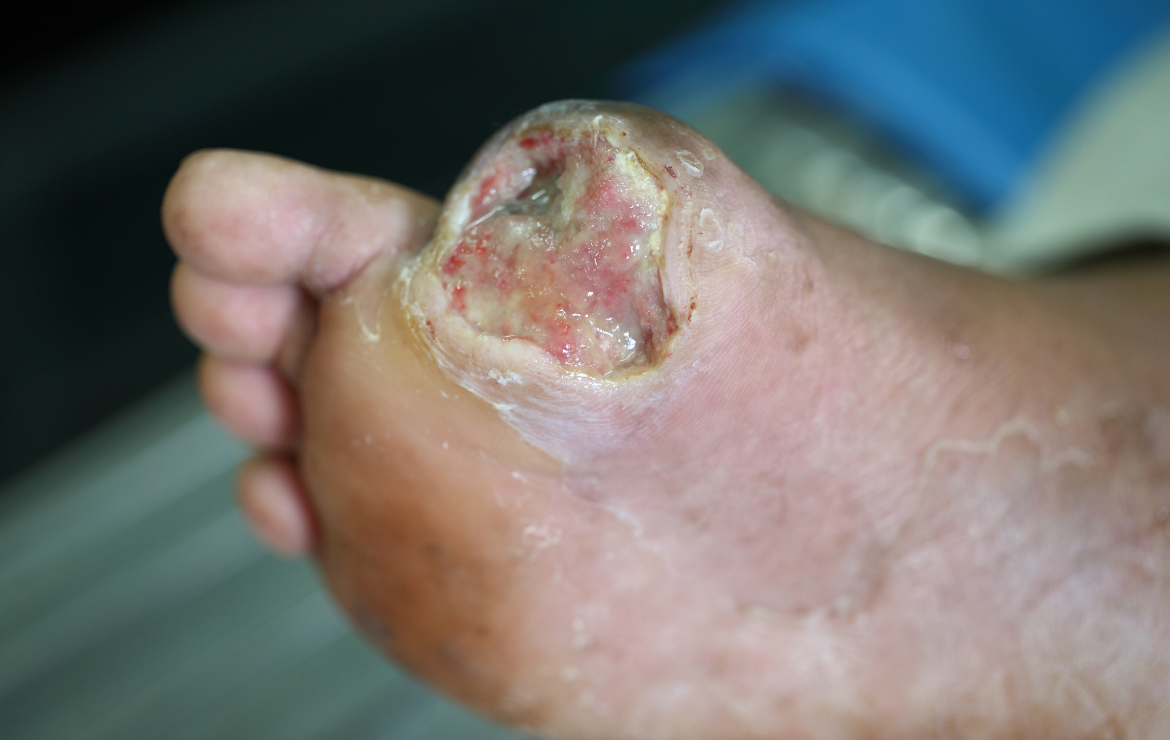Chronic slow-healing wounds are those that fail to progress through a timely and predictable sequence of repair. According to research, chronic wounds affect up to 5.7 million patients in the U.S. Its prevalence at long-term care facilities puts an enormous strain on the healthcare sector, with healthcare costs running into approximately $20 billion every year.
There are several risk factors for developing chronic non-healing wounds. The most frequent causes of wound chronicity include:
- Trauma
- Limited mobility (e.g., in bedridden patients which causes pressure ulcers)
- Infection
- Surgical wounds
- Radiation injuries
- Diabetes
- Burns
The Four Phases of Wound Healing
To better understand wound chronicity, it is critical to examine the typical phases of wound healing. Between the onset of a wound and when the body finally heals itself is a cascade of developments. The four main stages of wound healing are the hemostasis, inflammation, proliferation, and maturation phases. Let's take a look at these stages below:
Hemostasis
Hemostasis begins as soon as there is an injury, with the primary purpose of preventing or stopping the bleeding. In this phase, the affected blood vessels contract (vasoconstriction) to increase blood pressure, followed by platelet plug formation. The platelet plugs act as a barrier to minimize drainage from the wound bed. Finally, blood clots by turning from a liquid into a gel. Hemostasis begins as early as 60 seconds at the onset of injury and lasts anywhere between 30 minutes and several hours.
Inflammation
The inflammatory wound-healing phase destroys bacteria, removes debris and devitalized tissue, and facilitates the growth of new tissue in the wound bed. A type of white blood cells, called neutrophils are initially responsible for antibacterial action and debris removal for the first 1-2 days in regular wounds and over 90 days in chronic non-healing wounds. Subsequently, specialized cells, macrophages enter the wound and continue the process of debris removal and tissue repair. Symptoms of the inflammatory phase include edema (swelling), pain, and reddening of the wounded area and peri-wound skin.
Proliferation
The proliferative phase is one where the wound is rebuilt with new tissue to cover the wound bed. Proliferation in wound healing usually occurs in 3 successive stages and lasts anywhere from 4 days to 24 days. In the first stage, granulation tissue consisting of collagen and extracellular matrix fills the wound bed and forms a new network of blood vessels. Healthy granulation tissue is always bright red or pink, in contrast with a dark hue in infected wounds. In the second phase, the wound shrinks in size as margins pull towards the center. Finally, epithelial cells migrate to the wounded area and cover the surface completely (epithelialization).
Maturation
The final stage of wound healing, maturation, involves the remodeling of granulation tissue to gain more strength and flexibility as the wound is fully closed. In this stage, collagen changes from Type III to Type 1. Cellular activity in the area also gradually decreases. Depending on the nature and severity of the wound, maturation can last anywhere from 21 days to years (e.g., in chronic wounds).
Factors Affecting the Rate of Wound Healing
A host of different factors can slow the rate of wound healing. However, some of the most frequent causes include:
Age of the Patient: Wound healing in senior populations (65+ years and older) is typically slower than in younger ones due to several factors. As patients age, their skin becomes thinner and more inelastic, which can prevent wounds from healing faster. Another significant contributor is the delayed inflammatory response in older patients.
Diabetes: A sizable percentage of U.S. populations often suffer from diabetes, which is a risk factor for chronic wounds. Elevated blood sugar levels in patients can cause constriction in blood vessels and hardening of the arteries, which all contribute to wound chronicity.
Necrotic tissue: The presence of devitalized tissue such as eschar or slough and foreign particles in the wound bed can hugely impact the rate of wound healing. Eschar usually appears as dry, dark scabs of dead tissue, while sloughing is moist and loose necrotic tissue with a yellow hue. Necrotic tissue often needs to be removed from the wound as they form, for healing to occur.
Desiccation (dry wounds): A common misconception about wound healing is that they need to be left to dry to heal quickly. However, wounds heal much faster in a moist environment with less pain to the patient. Wound dressings can help donate moisture to the wound bed, keeping it properly hydrated. Hydration also facilitates epidermal cell migration and epithelialization, which is critical for wound healing.
Infection: The presence of bacteria and other harmful organisms in wounds can cause them to be slow-healing. Wound infection can occur due to unremoved foreign objects, such as bullets, rust, or from animal bites and cause edema, pain, and redness. Infections can result in complications such as cellulitis, osteomyelitis, and sepsis, which can be fatal.



.webp)

.avif)